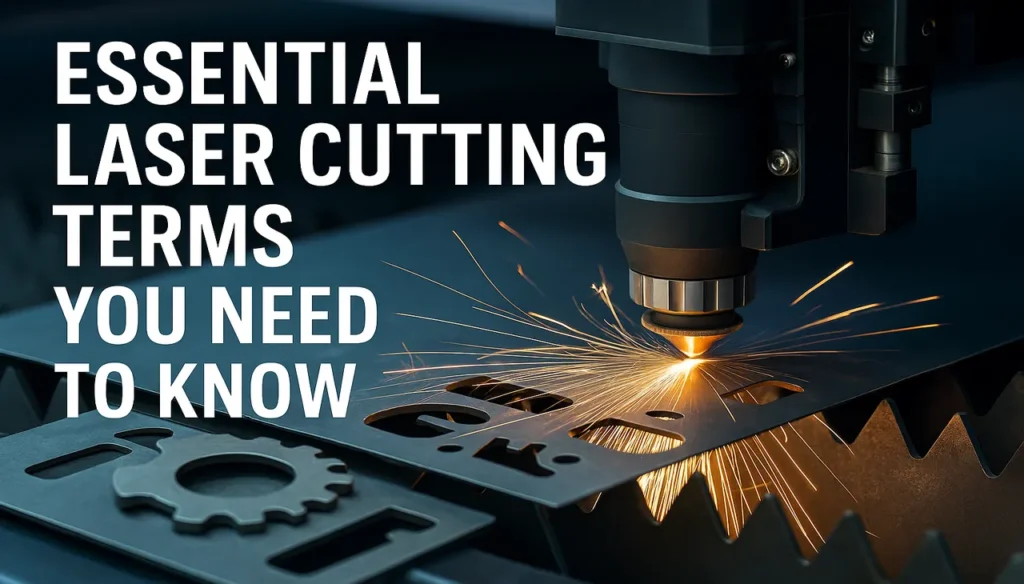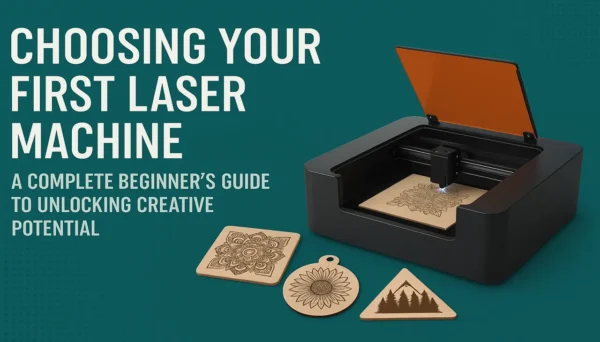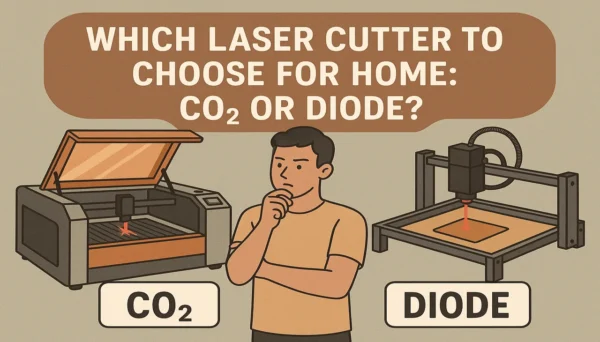
Essential Laser Cutting Terms You Need to Know
Are you just stepping into the exciting world of laser cutting, or perhaps you’re looking to deepen your understanding before investing in your first machine? The journey can feel a bit overwhelming with all the specialized jargon. But don’t worry! This comprehensive guide will demystify the essential laser cutting terms, ensuring you’re not just familiar with the words, but truly understand their meaning and importance.
Understanding these terms is crucial, not only for operating your machine safely and efficiently but also for fully appreciating the intricate details of laser cutting projects and maximizing your creative potential. Let’s dive in!
The Core Concepts
- Laser Engraving (Etching): This is a process where the laser beam removes a thin layer of material from the surface, creating a mark, image, or design. Unlike cutting, it doesn’t go all the way through the material. The depth and darkness of the engraving depend on the laser’s power, speed, and the material itself. It’s perfect for adding intricate details, logos, or text to a wide range of materials like wood, acrylic, and leather.
- Laser Cutting: As the name suggests, this is the process where the laser beam completely cuts through the material, creating separate pieces or open designs. The laser focuses intense energy onto a small area, vaporizing or melting the material. Laser cutting is known for its precision, clean edges, and ability to handle complex geometries, making it ideal for everything from intricate decorative items to precise jigsaw puzzles.
- Kerf: Often overlooked by beginners, kerf refers to the width of the material removed by the laser beam during cutting. Think of it as the “thickness” of the laser cut itself. It’s a critical factor in laser design, as neglecting it can lead to parts not fitting together correctly. For instance, if you’re creating interlocking designs like our popular 3D puzzles, understanding and compensating for kerf ensures a perfect fit every time.
- DPI (Dots Per Inch): Mainly relevant for laser engraving, DPI measures the density of the laser dots per inch, essentially defining the resolution of your engraved image. A higher DPI means more dots per inch, resulting in a finer, more detailed, and higher-quality engraving. For intricate photographic engravings or detailed text on laser-cut signs, a higher DPI is often preferred.
Machine & Components
- CO2 Laser: This is the most common type of laser used in hobbyist and small business laser cutters. CO2 lasers use a gas mixture (primarily carbon dioxide) to produce a laser beam ideal for cutting and engraving a wide variety of non-metallic materials, including wood, acrylic, paper, fabric, leather, and more. Our diverse range of laser files is primarily designed with CO2 laser capabilities in mind, ensuring perfect results.
- Diode Laser: A more compact and often more affordable option, diode lasers use semiconductor diodes to generate the laser beam. They are excellent for laser engraving and cutting thinner materials like paper, cardstock, and some woods. While generally less powerful than CO2 lasers for cutting thicker materials, they are popular for their ease of use and small footprint, making them a great starting point for beginners exploring laser craft projects.
- Laser Tube (CO2 Lasers): This is the heart of a CO2 laser machine. The laser tube contains the CO2 gas mixture and is where the laser beam is generated. The power of the laser (measured in Watts) is directly related to the size and quality of the laser tube. Proper care and maintenance of the laser tube are crucial for consistent performance and longevity.
- Focus Lens: Positioned in the laser head, the focus lens concentrates the raw laser beam into a tiny, powerful spot on the material’s surface. Achieving the correct focus is paramount for clean cuts and sharp engravings. An out-of-focus laser will result in fuzzy lines and inefficient material processing. This is why our laser cutting plans are designed with precision in mind, assuming your machine is properly focused.
- Work Area (Bed Size): This refers to the maximum dimensions of the material you can place and process within your laser machine. It’s a critical consideration when choosing a laser, as it dictates the size of laser cutting projects you can create. Always match your project ambitions with your machine’s work area – or find scalable laser designs that fit your setup.
Software & Files
- Vector Graphics: These are images defined by mathematical equations rather than pixels. They are scalable without losing quality, making them ideal for laser cutting and precise engraving. Common vector file formats include SVG, AI, DXF, and EPS. When you purchase laser cut files from our store, you’re primarily working with high-quality vector graphics that ensure crisp, clean lines for your cuts and engravings.
- Raster Graphics: Unlike vectors, raster graphics (like JPEGs or PNGs) are composed of a grid of pixels. They are primarily used for laser engraving photographic images or detailed patterns where the laser “draws” the image dot by dot. While great for engraving, they are not suitable for cutting as they lack the path information needed for the laser to follow a precise cut line.
- CAD (Computer-Aided Design): This broad term refers to software used to design and create 2D and 3D models. Many laser cutting designs originate in CAD software before being exported into a format suitable for the laser machine. Familiarity with CAD concepts can greatly enhance your ability to create custom laser projects or modify existing laser patterns.
- CAM (Computer-Aided Manufacturing): This refers to software that prepares your CAD designs for manufacturing by generating the necessary tool paths (in this case, laser paths). Your laser machine’s control software often incorporates CAM functionalities, translating your vector files into instructions the laser can understand.
- G-Code: This is a programming language used to control automated machine tools, including laser cutters. While you typically won’t write G-code directly (your laser software does that for you), understanding that it’s the underlying language driving your machine can give you a deeper appreciation for the precision involved in every laser cut project.
Operational Terms
- Power (Watts): This refers to the output power of your laser, measured in Watts (W). Higher wattage lasers can cut thicker materials faster and achieve deeper engravings. The right power setting is crucial for achieving desired results without over-processing or under-processing your material.
- Speed: This dictates how fast the laser head moves across the material. For cutting, slower speeds often mean deeper cuts or the ability to cut thicker materials. For engraving, varying speeds can influence the darkness and depth of the mark. Finding the optimal balance between power and speed is key to perfect laser cuts and engravings.
- Frequency (Hz): Primarily relevant for laser engraving, frequency (measured in Hertz) refers to how many pulses per second the laser emits. A higher frequency creates a more continuous and smoother engraved line, while a lower frequency can create a more dotted or textured effect.
- Air Assist: This is a crucial feature that directs a stream of compressed air directly at the laser’s focal point. Air assist serves multiple purposes: it blows away debris and smoke, preventing charring and flare-ups, and helps to keep the lens clean, extending its lifespan. Using air assist is highly recommended for achieving clean, crisp cuts on materials like plywood and MDF.
- Fume Extraction/Ventilation: When the laser processes materials, it produces smoke, fumes, and potentially harmful particles. Proper fume extraction and ventilation systems are absolutely essential for safety, ensuring these byproducts are safely removed from your workspace. Never operate a laser machine without adequate ventilation.
Ready to Create?
Understanding these fundamental terms is your first step towards becoming a proficient laser cutting enthusiast or professional. Armed with this knowledge, you’ll be better equipped to troubleshoot, optimize your settings, and, most importantly, bring your creative visions to life.
Whether you’re looking for simple laser engraving ideas or complex 3D laser cutting models, our comprehensive collection of laser cutting projects on https://laserfilesfreedom.com/product-category/all/ is designed to inspire and empower you. Each project comes with expertly crafted files, ready for you to download and use with confidence. Dive in, explore, and start creating something amazing today!



